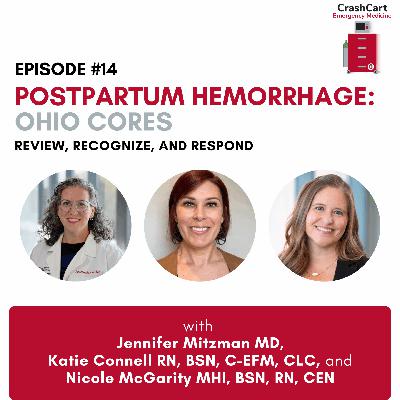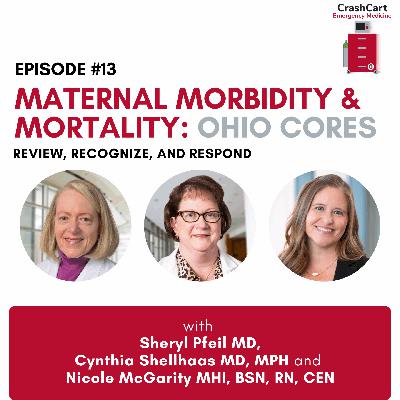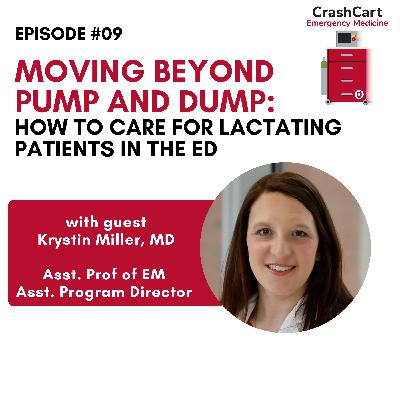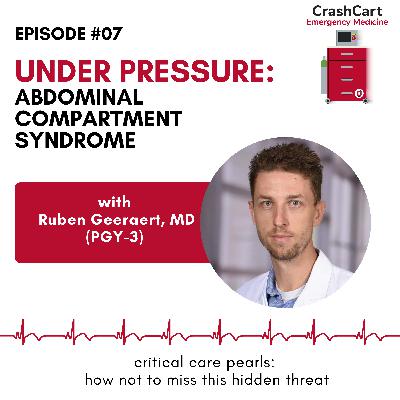Lights, Sirens, Complicated Delivery: Ohio CORES Series
Description
Are you prepared for an OB emergency? In this special six-part podcast series, the Ohio CORES team at The Ohio State University explores the management of pregnant and postpartum women in emergency situations. Each episode focuses on a high-stakes obstetrics scenarios, including: 1) maternal morbidity and mortality, 2) postpartum hemorrhage, 3) hypertensive emergencies, 4) cardiac arrest in pregnant patients, 5) peripartum cardiomyopathy, and 6) complicated vaginal deliveries. Whether you’re in the field, ED, ICU, or on L&D, this series equips you with the knowledge to respond when seconds count.
Ohio CORES (Collaborative Obstetric Resuscitation Education and Simulation) is an interdisciplinary team of educators from The Ohio State University dedicated to improving care for pregnant and postpartum women in critical condition through high-impact education and simulation training. Supported by funding from the Ohio Department of Children and Youth, Ohio CORES delivers obstetric emergency education to healthcare providers across the state.
In this EMS-focused Crash Cart EM episode, we tackle three high-stakes delivery emergencies: prolapsed cord, breech delivery, and shoulder dystocia. Learn practical, field-ready tips for recognition, initial management, and when to transport—because what EMS does matters for both mom and baby.
Guests: Katie Connell, RN, BSN, C-EFM, CLC; Thomas Connell Firefighter/NREMT-P
Host: Kim Bambach, MD
Editors: Amy Helder; Katie Connell, RN, BSN, C-EFM, CLC; Nicole McGarity, MHI, BSN, RN, CEN; Anneliese Sinclair; Cynthia Shellhaas, MD, MPH; Kim Bambach, MD
1. Prolapsed Cord
- Cord prolapse is when the umbilical cord exits the cervix before the fetus.
- A visible cord is a true emergency due to risk of fetal hypoxia.
- Insert a gloved hand into the vagina and elevate the presenting part off of the cord. Elevate the fetal head manually if this is the presenting part even if you are having trouble keeping the cord between your fingers. Avoid compressing the cord with your fingers.
- Maintain your hand in place throughout transport until hospital handoff.
- Position the patient knee-to-chest to reduce cord compression.
- Clearly alert the receiving hospital that you are managing a prolapsed cord and en route so that they can prepare for emergency delivery/OR.
2. Breech Delivery
- A delivery where the fetus presents with buttocks, feet, or other body parts instead of the head. Approximately 3% of all deliveries are breech.
- Allow spontaneous delivery of the legs and trunk without pulling.
- Support the baby’s body and head gently if delayed—never apply traction to the neck. A towel is around the infants torso to help lift and support.
- If progress stalls or an arm presents first, transport rapidly for operative delivery.
3. Shoulder Dystocia
- When one or both shoulders become stuck during vaginal delivery. Usually the anterior shoulder is trapped behind the pubic symphysis.
- Complications include: fetal brachial plexus injury (due to overaggressive traction), clavicle fracture, fetal hypoxia (due to impaired respirations and/or compression of the umbilical cord), postpartum hemorrhage, and perineal lacerations.
- Suspect shoulder dystocia if the head delivers and then retracts tightly (“turtle sign”).
- Perform the McRoberts maneuver (knees to chest) and apply suprapubic pressure—not fundal pressure. This combination will resolve ~50% of obstructions.
- If that fails, attempt the Gaskin maneuver (all fours) with gentle downward traction.
- Additional maneuvers are possible, however this is very difficult in the prehospital setting so emphasis should be on rapid transport if these maneuvers are unsuccessful.
4. EMS Pearls
- Always bring an OB kit, even for routine transports—you may need it.
- Keep mom and baby together by transporting them to the same OB-capable facility.
- Ask every reproductive-age patient if they are pregnant or recently postpartum.
- Recognize complications early and transport rapidly when needed.
- Place an IV in all pregnant patients—even for routine complaints—because they can decompensate quickly.























